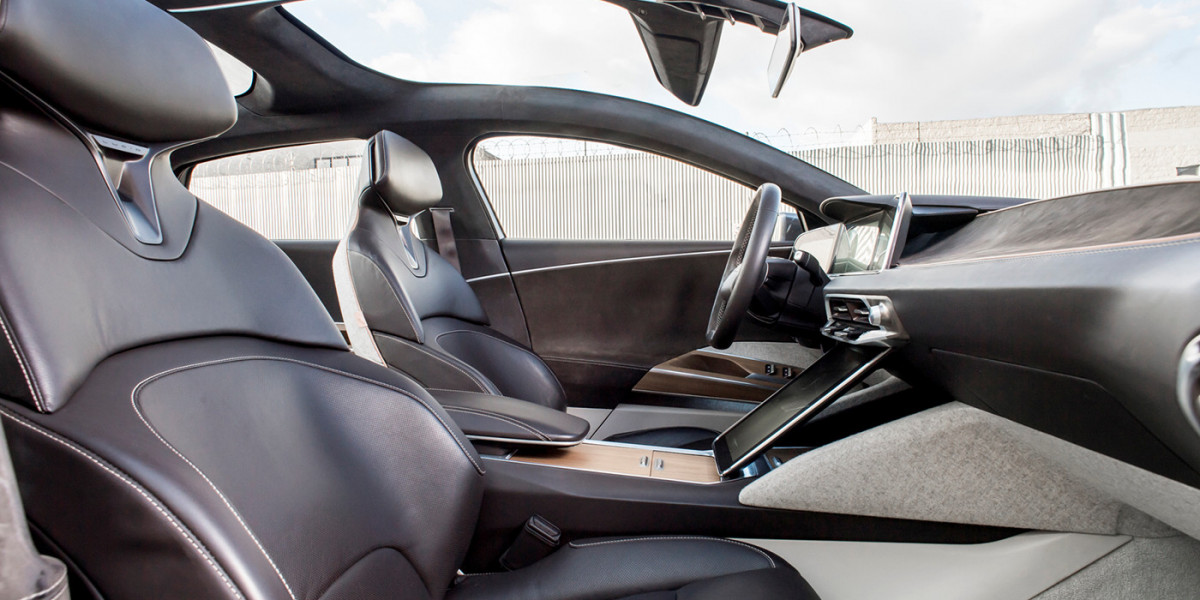The automotive interior materials market is undergoing transformation, driven by advancements in technology, shifting consumer preferences, and a growing emphasis on sustainability. However, despite these advancements, several hindrances continue to slow the widespread adoption of innovative materials, challenging the industry's ability to meet sustainability goals and consumer demands. These hindrances range from high production costs to limited availability of eco-friendly options, performance limitations, and regulatory roadblocks.
This article delves into the primary hindrances in the automotive interior materials market, exploring the obstacles that manufacturers face in their efforts to innovate and expand the use of sustainable materials in vehicle interiors.
1. High Production Costs
One of the most significant challenges hindering the adoption of advanced automotive interior materials is the high production cost. While sustainable and innovative materials such as bio-based plastics, recycled textiles, and composite materials offer long-term environmental benefits, they often come at a higher price point compared to traditional materials like synthetic leather or PVC. These high costs are due to various factors, including limited production scale, the need for specialized manufacturing processes, and the use of more expensive raw materials.
Key cost-related factors include:
Material Sourcing: Sustainable materials are often harder to source and require additional processing to ensure they meet performance and aesthetic standards. This adds to their overall cost, making it difficult for automakers to integrate them into budget-friendly vehicles.
Manufacturing Complexities: Producing innovative materials requires advanced technologies and specialized equipment, which drives up manufacturing costs. Automakers may also need to invest in new facilities or modify existing ones to accommodate the production of these materials, further increasing expenses.
Economies of Scale: Many sustainable materials are produced in limited quantities, meaning the cost per unit is higher. As demand grows and production scales up, these costs may decrease, but for now, the expense remains a barrier to mass adoption.
Hindrance Insight: The high costs of sustainable and advanced materials make it challenging for automakers to integrate these materials into lower-priced or mass-market vehicles without significantly increasing vehicle prices.
2. Limited Availability of Sustainable Materials
Another major hurdle in the automotive interior materials market is the limited availability of sustainable materials. While there is growing demand for eco-friendly materials, the supply of these materials is still constrained. Automakers face difficulties in sourcing the required materials consistently, which leads to delays in production and fluctuations in pricing.
Key challenges include:
Supply Chain Limitations: The global supply chains for sustainable materials, such as bio-based plastics and recycled fibers, are not yet fully established. This means automakers must rely on niche suppliers, creating a lack of consistency in material availability. Any disruption in these supply chains can impact production schedules and make it difficult to meet growing demand.
Resource Scarcity: Some sustainable materials, such as certain plant-based alternatives, are not produced in large enough quantities to meet the volume needed by the automotive industry. This limits the number of automakers who can access these materials and use them in their vehicles.
Sourcing Challenges: Eco-friendly materials must often undergo certification processes to ensure they meet regulatory standards for safety, sustainability, and durability. This can slow down the material sourcing process and create further challenges for automakers seeking to incorporate these materials.
Hindrance Insight: The limited availability of sustainable materials makes it difficult for automakers to consistently use eco-friendly options in vehicle interiors, particularly when demand outpaces supply.
3. Performance and Durability Concerns
While many sustainable materials offer environmental benefits, they often face performance and durability concerns when compared to traditional materials like leather, fabric, and synthetic plastics. Performance limitations can be a significant barrier to the widespread adoption of innovative materials in automotive interiors.
Key performance issues include:
Durability Issues: Some eco-friendly materials, such as plant-based leathers, may not be as durable or resistant to wear and tear as traditional materials. This affects their ability to withstand daily use, especially in high-wear areas like seats, dashboards, and steering wheels.
Comfort and Feel: Consumer expectations for comfort, particularly in high-end vehicles, can conflict with the properties of newer materials. For instance, some bio-based materials may not offer the same luxurious feel or texture as leather or soft-touch plastics, potentially leading to a decline in consumer satisfaction.
Weather Resistance: Sustainable materials often struggle to match the performance of conventional materials in extreme conditions. For example, bio-based plastics or eco-fabrics may not provide the same level of UV protection, moisture resistance, or heat insulation as traditional materials, which can affect their longevity and appearance.
Hindrance Insight: Performance concerns regarding the durability, comfort, and resistance of sustainable materials pose a challenge for automakers seeking to integrate these materials into high-end and mass-market vehicles.
4. Regulatory Challenges and Compliance Costs
The automotive industry is heavily regulated, and regulatory challenges present a major hurdle to the adoption of new materials. Compliance with safety, environmental, and health regulations is critical, but the constantly changing landscape of these regulations can make it difficult for automakers to stay ahead.
Key regulatory challenges include:
Safety Standards: Automotive interiors are subject to strict safety regulations regarding material flammability, toxicity, and emissions. Ensuring that new, sustainable materials meet these standards can be challenging, as not all eco-friendly materials have been thoroughly tested for safety in automotive environments.
Environmental Compliance: Many automakers are subject to global environmental regulations that require them to reduce the carbon footprint of their manufacturing processes. While sustainable materials can help meet these goals, manufacturers must also ensure that their sourcing, production, and disposal processes align with local and international regulations.
Lack of Standardization: The lack of universally accepted standards for sustainable materials in the automotive industry complicates the adoption process. Different regions have different regulations, making it difficult for manufacturers to implement uniform solutions across their global operations.
Hindrance Insight: Regulatory compliance requirements add complexity and cost to the adoption of new materials, limiting the ability of automakers to fully embrace innovative, sustainable options.
5. Consumer Resistance to Change
Despite growing awareness of environmental issues, consumer resistance to change remains a significant obstacle for the adoption of new automotive interior materials. Many consumers continue to prioritize traditional materials over new, eco-friendly alternatives, especially when the performance, comfort, or price of these materials does not meet their expectations.
Key factors contributing to consumer resistance include:
Brand Loyalty to Traditional Materials: Consumers may have a strong preference for established materials like leather or synthetic fabrics, which they associate with luxury, comfort, and quality. Shifting their preferences to newer, less familiar materials can be challenging.
Perceived Value of New Materials: Some consumers may not see the added value in paying a premium for sustainable materials, especially if the performance benefits are not immediately apparent. The perceived value of eco-friendly materials must be communicated effectively to persuade consumers.
Slow Adoption of Eco-Friendly Options: While interest in sustainability is growing, many consumers are still hesitant to embrace eco-friendly materials in their vehicles due to a lack of education or understanding of the benefits.
Hindrance Insight: Consumer resistance to unfamiliar materials and preferences for traditional options create barriers to the widespread adoption of sustainable automotive interior materials.
Conclusion
The automotive interior materials market faces significant hindrances that limit the adoption of sustainable, innovative, and high-performance materials. High production costs, limited availability, performance concerns, regulatory challenges, and consumer resistance continue to impede the widespread use of eco-friendly alternatives. However, as technology improves and consumer awareness grows, these challenges may eventually be overcome, leading to greater adoption of sustainable and innovative materials in vehicle interiors. Overcoming these obstacles will be critical for automakers to remain competitive and meet the evolving demands of consumers and regulators.
Learn more: https://www.pristinemarketinsights.com/automotive-interior-materials-market-report









